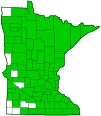broadleaf enchanter’s nightshade
(Circaea canadensis)
Conservation • Description • Habitat • Ecology • Use • Distribution • Taxonomy
Conservation Status |
|
|||||||
| IUCN Red List | not listed |
|||||||
| NatureServe | N5 - Secure SNR - Unranked |
|||||||
| Minnesota | not listed |
|||||||
Description |
||
Broadleaf enchanter’s nightshade is a 12″ to 28″ tall, erect, perennial forb that rises on a single stem from a short taproot, fibrous roots, and slender rhizomes. The stem is erect, round, and unbranched below the inflorescence. It is sparsely covered with white, downward-pointing hairs, becoming almost hairless with age. The leaves are opposite, oblong egg-shaped, 2⅜″ to 4¾″ long, and usually less than half as wide as long. They are on leaf stalks (petioles) that are up to 2″ long. The petioles are round and have a slender groove on the upper side. They are hairless or sparsely covered with forward pointing hairs. The leaf blades are rounded or shallowly heart-shaped at the base and taper to a point at the tip with concave sides along the tip. The upper and lower surfaces sparsely hairy. The margins are very shallowly toothed. The teeth have a minute, whitish tip. The inflorescence is an unbranched, up to 8″ long cluster (raceme) of many flowers at the end of the stem and shorter racemes rising singly from the axils of bracts near the base of the inflorescence. The central axis of the inflorescence (rachis) elongates early in the season, so that the flowers are widely and evenly spaced along its length. The rachis is moderately to densely covered with spreading, gland-tipped hairs. Each flower is held at the end of a ⅛″ to ⅜″ long, widely-spreading, glandular-hairy stalk (pedicel). At the base of the flower there is a globular, green ovary. The ovary is densely covered with long, hooked hairs. There are 2 green sepals, 2 white petals, 2 white stamens with white anthers, and a long, slender, white style. The sepals are 1 ⁄16″ to ⅛″ long, sharply bent backward, glandular-hairy on the outer surface, and hairless on the inner surface. The petals are 1 ⁄16″ to ⅛″ long, spreading, and deeply notched at the tip, the notch less than half the length of the petal. The fruit is a ⅛″ to 3 ⁄16″ long, 2-celled capsule. The capsule is strongly ridged and densely covered with stiff, hooked hairs. |
||
Height |
||
12″ to 28″ |
||
Flower Color |
||
White |
||
Similar Species |
||
Alpine enchanter’s-nightshade (Circaea alpina ssp. alpina) is a smaller plant, no more than 12″ in height. The leaves are usually more than half as wide as long. The flowers are clustered at the end of the raceme. The pedicels are erect to ascending and hairless. The fruit capsule is not ridged. |
||
Habitat |
||
Moist. Woodlands. |
||
Ecology |
||
Flowering |
||
June to August |
||
Pests and Diseases |
||
|
||
Use |
||
|
||
Distribution |
||||
|
Sources |
|||
| 7/29/2022 | ||||
Nativity |
||||
Native |
||||
Occurrence |
||||
|
||||
Taxonomy |
|||
| Kingdom | Plantae (Plants) | ||
| Subkingdom | Pteridobiotina | ||
| Phylum | Tracheophyta (Vascular Plants) | ||
| Class | Magnoliopsida (Dicots) | ||
| Order | Myrtales (Myrtles, Evening Primroses, and Allies) | ||
Family |
Onagraceae (Evening Primrose) | ||
| Subfamily | Onagroideae | ||
| Tribe | Circaeeae | ||
Genus |
Circaea (enchanter’s nightshades) | ||
Subordinate Taxa |
|||
None Until recently, this species was included in Circaea lutetiana, one circumboreal species with three subspecies. Only Circaea lutetiana ssp. canadensis occurred in North America. In 2005, based on molecular DNA and other data, the Asian subspecies retained the name Circaea lutetiana while the other two became subspecies of Circaea canadensis. The New World species became Circaea canadensis ssp. canadensis, while the Old World species became Circaea canadensis ssp. quadrisulcata. A molecular phylogenetic study published in 2009 showed that the two Circaea canadensis subspecies were not closely related, despite their morphological similarity. The New World species retained the name Circaea canadensis, while the Old World species became Circaea quadrisulcata. To date (July 29, 2022), a few sources, including iNaturalist, have adopted the name Circaea canadensis for just this species. Other names currently in use include Circaea canadensis ssp. canadensis (FNA, ITIS, and Plants of the World Online), Circaea lutetiana ssp. canadensis (USDA PLANTS, NatureServe, and World Flora Online), Circaea lutetiana (GRIN), and Circaea lutetiana var. canadensis (MnTaxa). |
|||
Synonyms |
|||
Circaea canadensis ssp. canadensis Circaea lutetiana Circaea lutetiana ssp. canadensis Circaea lutetiana ssp. canadensis Circaea quadrisulcata var. canadensis Circaea quadrisulcata ssp. canadensis |
|||
Common Names |
|||
broadleaf enchanter’s nightshade broadleaf enchanter’s-nightshade broad-leaf enchanter’s nightshade broad-leaf enchanter’s-nightshade |
|||
Glossary
Glandular hairs
Hairs spread over aerial vegetation that secrete essential oils. The oils act to protect against herbivores and pathogens or, when on a flower part, attract pollinators. The hairs have a sticky or oily feel.
Pedicel
On plants: the stalk of a single flower in a cluster of flowers. On insects: the second segment of the antennae. On Hymenoptera and Araneae: the narrow stalk connecting the thorax to the abdomen: the preferred term is petiole.
Petiole
On plants: The stalk of a leaf blade or a compound leaf that attaches it to the stem. On ants and wasps: The constricted first one or two segments of the rear part of the body.
Raceme
An unbranched, elongated inflorescence with stalked flowers. The flowers mature from the bottom up.
Rachis
The main axis of a compound leaf, appearing as an extension of the leaf stalk; the main axis of an inflorescence.
Rhizome
A horizontal, usually underground stem. It serves as a reproductive structure, producing roots below and shoots above at the nodes.
Visitor Photos |
|||||
Share your photo of this plant. |
|||||
| This button not working for you? Simply email us at info@MinnesotaSeasons.com. Attach one or more photos and, if you like, a caption. |
|||||
Luciearl |
|||||
In some way this plant is similar to American lopseed. Flower is white instead of purple, leaves not toothed… |
|||||
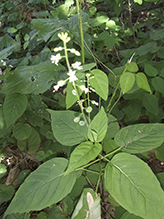 |
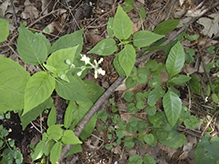 |
||||
MinnesotaSeasons.com Photos |
|||||
Plant |
|||||
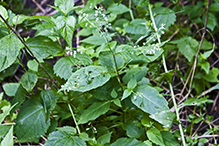 |
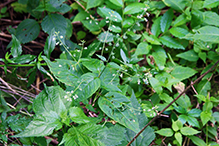 |
||||
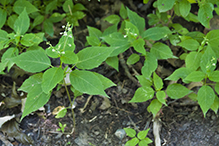 |
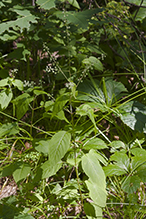 |
||||
Inflorescence |
|||||
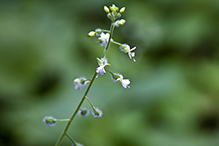 |
|||||
Leaves |
|||||
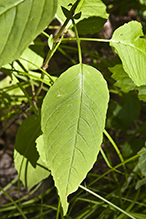 |
|||||
Infructescence |
|||||
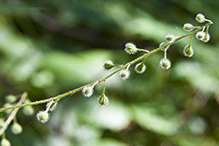 |
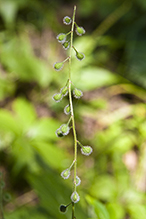 |
||||

Slideshows |
||

Visitor Videos |
|||
Share your video of this plant. |
|||
| This button not working for you? Simply email us at info@MinnesotaSeasons.com. Attach a video, a YouTube link, or a cloud storage link. |
|||
Other Videos |
|||
| Enchanter's Nightshade (Circaea Lutetiana) - 2012-06-27 W3stlander |
|||
About
Published on Jun 28, 2012 Circaea lutetiana (enchanter's nightshade) is a plant in the evening primrose family, Onagraceae. ------------------- |
|||

Visitor Sightings |
|||||
Report a sighting of this plant. |
|||||
| This button not working for you? Simply email us at info@MinnesotaSeasons.com. Be sure to include a location. |
|||||
| Luciearl 7/26/2022 |
Location: Lake Shore, MN In some way this plant is similar to American lopseed. Flower is white instead of purple, leaves not toothed… |
 |
|||
MinnesotaSeasons.com Sightings |
|||||
Avon Hills Forest SNA, North Unit Bertram Chain of Lakes Regional Park Carver Highlands WMA, South Unit Charles A. Lindbergh State Park Clifton E. French Regional Park Lake Alexander Woods SNA, South Unit Mary Schmidt Crawford Woods SNA Northern Tallgrass Prairie NWR, Rengstorf Unit Sand Prairie Wildlife Management and Environmental Education Area |
|||||

|
Created: Last Updated: © MinnesotaSeasons.com. All rights reserved. |
